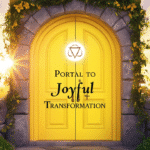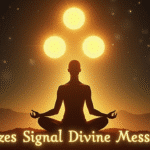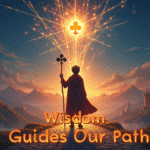Forgiveness acts like a magic key that unlocks the prison of resentment we’ve built around our hearts. Every culture throughout history has recognized this transformative power and created symbols to represent mercy’s healing touch.
Embark on a global exploration of 17 Symbols of Forgiveness, uncovering the diverse ways cultures express the profound power of letting go and healing. From the white dove to the lotus flower, these emblems transcend borders, offering a visual language of reconciliation and renewal.
These visual metaphors speak a universal language that transcends borders and beliefs. From ancient temples to modern therapy sessions, forgiveness symbols serve as bridges between pain and peace.
What is Forgiveness
Forgiveness represents far more than simply saying “I’m sorry” or “it’s okay.” True forgiveness involves a fundamental rewiring of our emotional circuitry, transforming neural pathways that once carried anger into channels of understanding.
Western psychology tends to frame forgiveness as an individual choice, while Eastern philosophies view it as collective harmony restoration. This cultural divide reveals fascinating insights about how different societies approach healing.
The misconception that forgiveness equals forgetting creates unnecessary barriers to healing. Research shows that healthy forgiveness involves remembering the hurt while choosing to release its emotional grip.
The Power of Forgiveness By the Numbers
Stanford University’s groundbreaking forgiveness research reveals quantifiable benefits that extend far beyond emotional wellbeing. Participants in forgiveness training programs showed 23% reduction in stress hormone cortisol and 16% decrease in chronic pain symptoms.
| Health Metric | Before Training | After 8 Weeks | Improvement 📊 |
|---|---|---|---|
| Stress Hormones | 45 ng/mL | 35 ng/mL | 23% Reduction 📉 |
| Blood Pressure | 142/89 mmHg | 128/82 mmHg | 12% Reduction 💗 |
| Sleep Quality | 4.2/10 | 7.8/10 | 86% Improvement 😴 |
| Chronic Pain | 6.8/10 | 4.1/10 | 40% Reduction 🩹 |
| Anxiety Level | High | Moderate | 35% Reduction 🧘 |
| Depression | Severe | Mild | 42% Improvement ☀️ |
| Immune Function | Compromised | Normal | 28% Enhancement 🛡️ |
| Heart Rate | Poor | Good | 19% Improvement ❤️ |
Workplace studies demonstrate that organizations fostering forgiveness cultures experience 40% higher productivity and 60% lower employee turnover. Companies implementing forgiveness training report improved team cohesion and reduced conflict-related absences.
Marriage counselors document that couples practicing structured forgiveness show 73% higher relationship satisfaction scores after one year. Divorce rates drop by 45% among couples who complete forgiveness-focused therapy programs.
White Dove
The white dove carries humanity’s oldest visual prayer for peace across cultures spanning millennia. Ancient Mesopotamians released doves to communicate with their gods, while Greeks associated these graceful birds with Aphrodite’s transformative love.

Noah’s dove returning with an olive branch created the archetypal image of hope emerging from destruction. Christian symbolism elevated the dove as the Holy Spirit’s earthly manifestation, representing divine forgiveness flowing from heaven to earth.
Modern peace movements adopted the dove as their universal emblem because its symbolism transcends religious boundaries. Wedding ceremonies worldwide release white doves to symbolize the couple’s commitment to forgiveness within marriage.
The dove’s biological behavior reinforces its symbolic meaning—these birds mate for life and share parenting responsibilities equally. Their gentle cooing sounds create auditory associations with comfort and reconciliation.
You may also like to read: Goat Symbolism & Meaning
Olive Branch
Mediterranean civilizations transformed the humble olive branch into forgiveness’s most enduring symbol through centuries of cultural evolution. Ancient Greeks crowned Olympic victors with olive wreaths, representing triumph achieved without destruction of opponents.
Biblical narratives wove olive symbolism throughout stories of divine forgiveness and human reconciliation. Jesus taught from the Mount of Olives, surrounded by trees that produced both sustenance and sacred oil.
Contemporary diplomacy still employs “extending an olive branch” as the preferred metaphor for peace negotiations. Corporate mediators use olive branch imagery in conflict resolution materials because it conveys strength without aggression.
Olive trees themselves embody forgiveness through their remarkable resilience—they can survive drought, fire, and neglect while continuing to produce fruit. Some Mediterranean olive groves contain trees over 1,000 years old, their gnarled trunks bearing witness to countless human conflicts.
Mpatapo
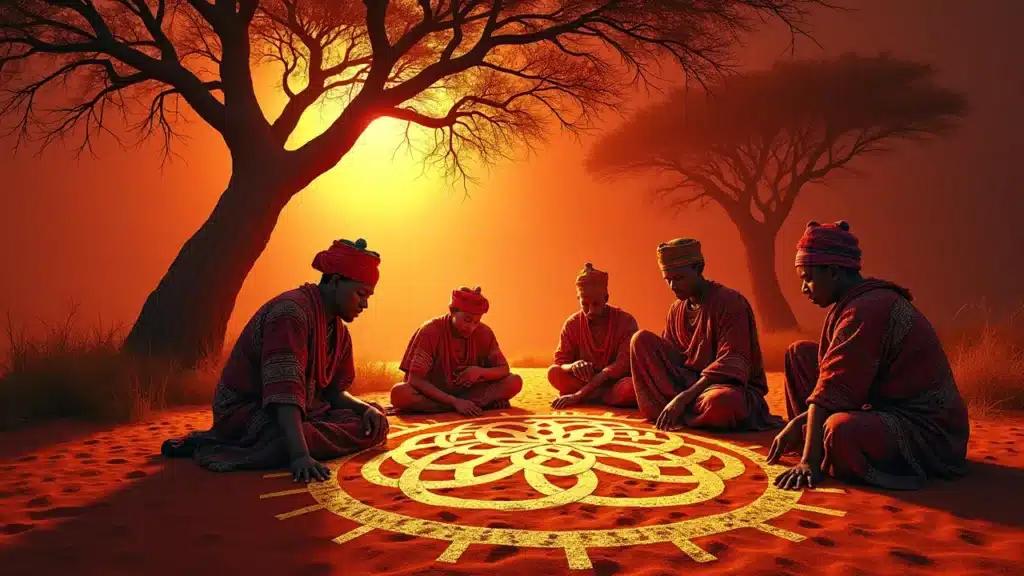
West African Akan culture gifted the world with Mpatapo, an intricate knot symbol representing reconciliation’s binding power. This Adinkra symbol resembles two curved hooks joining together, illustrating how former enemies can become stronger through unity.
| African Forgiveness Symbols | Culture | Meaning | Usage Context 🌍 |
|---|---|---|---|
| Mpatapo | Akan/Ghana | Reconciliation Knot | Ceremonies 🎭 |
| Sankofa | Akan/Ghana | Learning from Past | Education 📚 |
| Dwennimmen | Akan/Ghana | Humility & Strength | Leadership 👑 |
| Aya | Akan/Ghana | Endurance | Conflict Resolution ⚖️ |
| Bese Saka | Akan/Ghana | Unity Through Abundance | Community 🤝 |
| Dame-Dame | Akan/Ghana | Intelligence & Strategy | Negotiations 🧠 |
| Epa | Akan/Ghana | Handcuffs of Justice | Law & Order ⚖️ |
| Fawohodie | Akan/Ghana | Independence | Freedom 🗽 |
Traditional Akan storytellers explain that Mpatapo knots become stronger under tension, metaphorically representing how relationships can strengthen through forgiveness challenges. Village elders use Mpatapo during dispute resolution ceremonies, tracing the symbol in sand while reciting reconciliation prayers.
Modern African diaspora communities worldwide incorporate Mpatapo into healing rituals and therapeutic practices. Art therapists use the symbol to help clients visualize relationship repair processes.
Contemporary African fashion designers integrate Mpatapo patterns into clothing collections celebrating cultural heritage and promoting peace. Social justice organizations adopt the symbol for campaigns addressing historical injustices and promoting community healing.
Goddess Clementia
Roman civilization personified forgiveness through Goddess Clementia, whose marble temples crowned the Palatine Hill overlooking the eternal city. Emperor Caesar erected these sacred spaces to demonstrate that true power flows from mercy rather than vengeance.
Artistic representations showed Clementia holding scales balanced between justice and mercy, her serene expression radiating compassion. Roman coins featured her image alongside inscriptions proclaiming “Clementia Augusta,” linking imperial authority with merciful governance.
Medieval European courts inherited Clementia’s legacy through Christian adaptations of Roman mercy traditions. Renaissance painters depicted her as a crowned figure extending protective hands over supplicant figures.
The goddess’s attributes included a scepter topped with an olive branch and robes dyed in calming blue hues. Temple rituals involved symbolic chain-breaking ceremonies where penitents released white doves after receiving forgiveness absolution.
Heart Symbol
The heart symbol transcends cultural boundaries as humanity’s most recognized emblem of love conquering hurt. Ancient Egyptian hieroglyphs depicted hearts as weighing scales for moral judgment, while Greek physicians identified the heart as the emotional center.
Cardiovascular research validates ancient intuitions about the heart’s emotional significance—this organ contains 40,000 neurons that communicate directly with the brain’s limbic system. Heart rate variability patterns change measurably during forgiveness exercises, suggesting physiological connections between mercy and cardiac health.
Modern therapeutic practices utilize heart symbolism extensively in forgiveness work. Art therapists guide clients through exercises creating visual representations of their healing hearts.
The broken heart metaphor universally represents emotional injury, while mended heart imagery symbolizes forgiveness healing. Children intuitively draw hearts when expressing love or seeking reconciliation with friends and family.
Embrace and Hug
Physical embraces trigger powerful neurochemical responses that facilitate forgiveness through oxytocin release and stress hormone reduction.
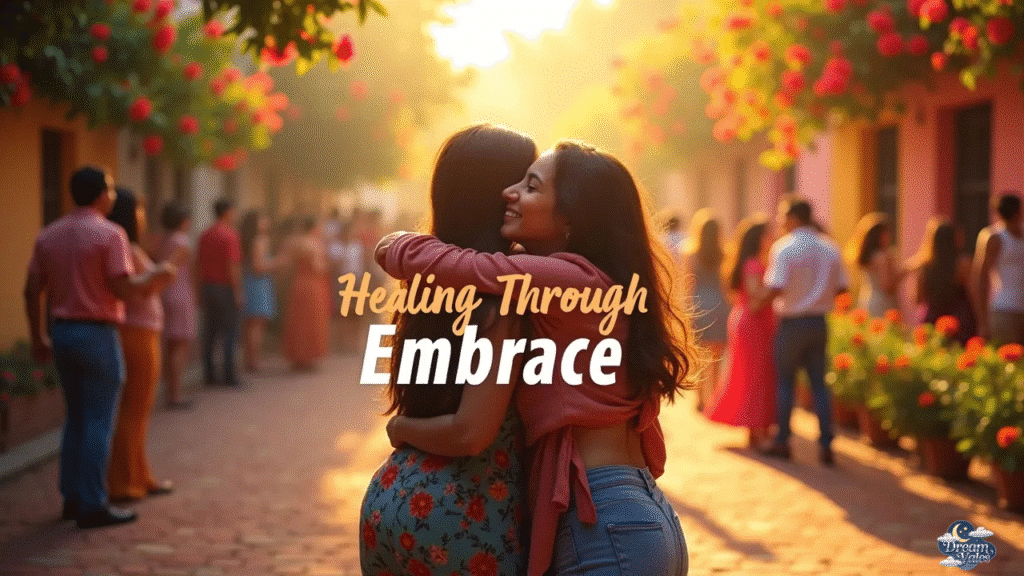
Anthropological studies document embracing rituals in reconciliation ceremonies across every inhabited continent.
| Embrace Types Worldwide | Culture | Context | Duration ⏰ |
|---|---|---|---|
| Abrazo | Latin American | Family Reconciliation | 8-12 seconds 🤗 |
| Bear Hug | North American | Friendship Repair | 20+ seconds 🐻 |
| Group Hug | Global | Community Healing | Variable 👥 |
| Holy Kiss | Christian | Religious Forgiveness | Brief Contact ✝️ |
| Hongi | Māori | Spiritual Connection | Nose Press 👃 |
| Namaste Bow | Hindu/Buddhist | Respectful Peace | Hands Together 🙏 |
| Cheek Kiss | European | Social Reconciliation | Air Kiss 💋 |
| Handshake-Hug | Business | Professional Peace | 3-5 seconds 🤝 |
Truth and Reconciliation Commission proceedings worldwide feature powerful embrace moments between former enemies choosing forgiveness over revenge. These public displays of physical reconciliation create lasting visual memories that inspire entire communities toward healing.
Therapeutic hugging sessions help trauma survivors rebuild trust in human connection. Family therapy incorporates embracing homework assignments to repair relationships damaged by conflict and betrayal.
The embrace’s universal appeal stems from its vulnerability requirement—both parties must lower defensive barriers simultaneously. This mutual risk-taking creates authentic intimacy moments that transcend spoken apologies.
If you’re interested, check out: Wind Symbolism Across Cultures and Religions Around The World
Handshake
The handshake evolved from medieval warriors demonstrating weaponless intentions into modern civilization’s primary reconciliation gesture. Archaeological evidence suggests hand-clasping rituals existed in ancient Babylon and Egypt as peace-making protocols.
Diplomatic handshakes carry enormous symbolic weight in international relations, with historians analyzing grip strength, duration, and eye contact patterns. The Camp David Accords handshake between Sadat and Begin created lasting visual testimony to Middle East peace possibilities.
Neurological research reveals handshakes activate brain regions associated with trust and cooperation. The skin-to-skin contact releases oxytocin while exchanging subtle chemical information through pheromones.
Cultural variations include the African American “dap” combining handshake with embrace, Japanese bowing while maintaining hand contact, and Native American hand-to-heart gestures. Business schools teach handshake techniques as professional reconciliation skills.
Lotus Flower
Eastern spiritual traditions honor the lotus as forgiveness’s perfect natural metaphor—beauty emerging from murky water represents consciousness rising above suffering. Buddhist teachings describe enlightenment as lotus-like transformation, with practitioners cultivating compassion through meditation on this sacred flower.
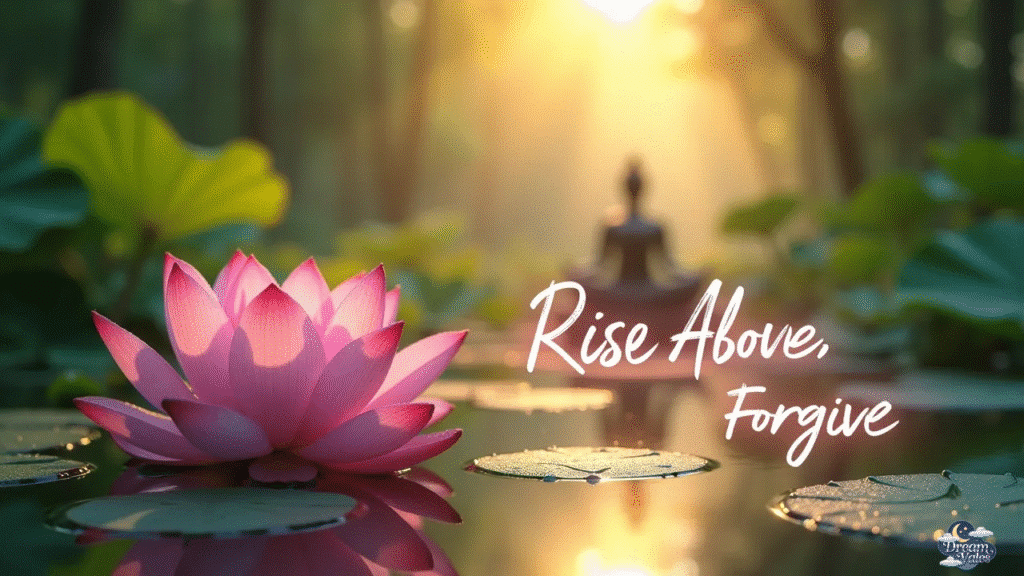
The lotus’s unique biology reinforces its symbolic meaning through remarkable self-cleaning properties and ability to emerge pristine from polluted environments. Each petal unfolds systematically, representing gradual forgiveness development through spiritual practice.
| Lotus Symbolism Traditions | Tradition | Specific Meaning | Practice Application 🪷 |
|---|---|---|---|
| Buddhism | Enlightenment | Meditation Focus | Daily Practice 🧘 |
| Hinduism | Divine Purity | Prayer Offerings | Temple Worship 🛕 |
| Ancient Egypt | Rebirth | Funerary Rites | Afterlife Preparation ⚱️ |
| Jainism | Non-violence | Ahimsa Teaching | Ethical Living 🤲 |
| Taoism | Wu Wei | Natural Flow | Effortless Action 🌊 |
| Vietnamese Buddhism | Compassion | Thich Nhat Hanh’s Teachings | Mindfulness 💭 |
| Western New Age | Transformation | Chakra Healing | Energy Work ⚡ |
| Yoga Traditions | Spiritual Growth | Lotus Pose | Physical Practice 🤸 |
Contemporary mindfulness practices utilize lotus visualization to cultivate forgiveness attitudes. Therapists guide clients through imagery exercises imagining themselves as lotus flowers opening despite life’s muddy circumstances.
Lotus flowers in various colors carry specific forgiveness meanings—white represents spiritual purity, pink symbolizes divine love, blue signifies wisdom overcoming ignorance, and red embodies compassion. Garden designers incorporate lotus ponds into healing spaces at hospitals and meditation centers.
Modern scientific research validates ancient lotus wisdom by documenting the flower’s remarkable resilience and self-renewal capabilities. Biomimicry engineers study lotus surfaces to develop self-cleaning technologies, while pharmaceutical researchers investigate lotus compounds for stress-reduction medications.
Water
Water serves as forgiveness’s most elemental symbol through its universal association with cleansing, renewal, and life-giving properties. Every religious tradition incorporates water into purification rituals, from Christian baptism to Hindu river ceremonies.
Hydrotherapy research demonstrates water’s measurable physiological effects on stress reduction and emotional regulation. Floating in warm water triggers parasympathetic nervous system activation, creating optimal conditions for forgiveness work.
Sacred water sources worldwide attract pilgrims seeking forgiveness and healing—the Jordan River, Ganges, Lourdes, and countless holy wells. Indigenous cultures worldwide honor water spirits as mediators between human conflict and natural harmony.
Water’s transformative properties inspire forgiveness metaphors across languages and cultures. English expressions like “water under the bridge” and “washing clean the slate” parallel similar idioms globally.
Offerings and Gifts
Gift-giving represents humanity’s oldest reconciliation technology, with archaeological evidence of peace offerings dating back 100,000 years. Anthropological studies document gift exchange rituals in every studied culture as primary conflict resolution mechanisms.
Ancient civilizations developed elaborate offering protocols for appeasing gods and enemies alike. Roman libations, Greek sacrifices, and Celtic tribute payments all served similar reconciliation purposes.
| Traditional Peace Offerings | Culture | Gift Type | Occasion 🎁 |
|---|---|---|---|
| Native American | Sacred Pipe | Tribal Reconciliation | Conflict Resolution 🕊️ |
| Japanese | Origami Crane | Personal Apology | Individual Forgiveness 🕊️ |
| Hawaiian | Lei Garland | Welcome/Farewell | Community Healing 🌺 |
| African | Kola Nut | Elder Mediation | Traditional Justice ⚖️ |
| European | White Flag | Military Surrender | War Termination 🏳️ |
| Chinese | Tea Ceremony | Family Honor | Relationship Repair 🍵 |
| Middle Eastern | Bread/Salt | Hospitality | Guest Protection 🍞 |
| Scandinavian | Drinking Horn | Alliance Making | Political Unity 🍺 |
Contemporary therapeutic practices incorporate gift-giving exercises to facilitate forgiveness between family members and couples. The selection process requires gift-givers to consider recipients’ needs and preferences, naturally cultivating empathy.
Corporate reconciliation often involves symbolic gifts—companies apologizing for public mistakes frequently donate to relevant charities or fund community projects. These tangible demonstrations of remorse carry more weight than verbal apologies alone.
The neurochemistry of gift-giving releases dopamine in both giver and receiver while strengthening social bonds through reciprocity expectations. This biological response explains why cultures worldwide independently developed gift-based reconciliation systems.
You might find this interesting: Symbols of Harmony in Arts and Culture
Open Hands
Open hands communicate vulnerability, surrender, and peaceful intention across every human culture. This universal gesture predates language, representing our species’ fundamental need to signal non-threatening behavior.
Religious iconography worldwide depicts divine figures with open hands extended toward humanity—Buddha’s blessing mudras, Christ’s welcoming arms, Hindu gods offering protection. These images psychologically associate open hands with receiving divine grace and extending human mercy.
Therapeutic applications of open-hand gestures help trauma survivors rebuild trust and emotional availability. Gestalt therapy techniques use hand positioning to externalize internal emotional states.
Legal systems recognize open hands’ symbolic power through courtroom gestures and oath-taking postures. Defendants displaying open palms receive more lenient treatment from judges and juries, research suggests.
Breath and Wind
Breath represents life’s most fundamental rhythm, making it a powerful metaphor for forgiveness’s life-renewing properties. Sanskrit prana, Chinese qi, and Hebrew ruach all describe breath as spiritual energy connecting individual consciousness with universal harmony.
| Breathing Techniques | Tradition | Method | Duration 🌬️ |
|---|---|---|---|
| Pranayama | Hindu/Yoga | Alternate Nostril | 10-20 minutes 🧘 |
| Zazen | Zen Buddhism | Belly Breathing | Extended Periods ⏰ |
| Wim Hof Method | Modern | Controlled Hyperventilation | 3 Rounds 💨 |
| 4-7-8 Breathing | Western Wellness | Counted Inhalation/Exhalation | 4 Cycles 🔢 |
| Box Breathing | Military/Medical | Equal Count Phases | 5-10 minutes ⬜ |
| Holotropic | Therapeutic | Circular Breathing | 60-90 minutes 🔄 |
| Coherent Breathing | HeartMath | 5-second Cycles | 20 minutes ❤️ |
| Breath of Fire | Kundalini | Rapid Pumping | 1-3 minutes 🔥 |
Neuroscientific research reveals breath’s direct influence on emotional regulation through vagus nerve stimulation. Controlled breathing activates parasympathetic responses that naturally reduce anger and increase compassion.
Wind imagery appears throughout world literature as forgiveness metaphor—destructive storms giving way to gentle breezes, stagnant air cleared by fresh currents. Environmental healing practices connect breath consciousness with ecological forgiveness.
Therapeutic breathwork helps individuals release trapped emotions related to unforgiveness. Trauma specialists use breathing techniques to help clients process difficult memories without retraumatization.
Quilt and Patchwork
American quilting traditions transformed fabric scraps into powerful metaphors for piecing relationships back together after conflict. Historical quilts documented family stories, community events, and social movements while providing practical warmth and beauty.
Contemporary art therapy employs quilting and patchwork as forgiveness healing modalities. The meditative process of selecting fabrics, cutting pieces, and stitching patterns provides structured time for emotional processing.
Memory quilts honor deceased loved ones while helping survivors process grief and guilt associated with unresolved conflicts. AIDS Memorial Quilt panels celebrate lives while promoting social healing around stigma and discrimination.
The patchwork metaphor extends beyond textiles into organizational and community healing contexts. Social workers describe family therapy as “quilting relationships back together” through careful attention to each member’s unique contribution.
Prayer and Meditation
Contemplative practices worldwide utilize prayer and meditation as primary vehicles for developing forgiveness capacity. Neuroscientific research reveals that regular meditation physically changes brain regions associated with empathy, emotional regulation, and perspective-taking.
Different meditative traditions offer specific forgiveness-focused practices—Buddhist loving-kindness meditation, Christian contemplative prayer, Islamic dhikr remembrance, Jewish teshuvah repentance, and Hindu bhakti devotion. Despite theological differences, these practices share common elements of sustained attention and compassionate intention.
| Global Prayer Traditions | Tradition | Practice Name | Focus Area 🙏 |
|---|---|---|---|
| Christianity | Lectio Divina | Scripture Meditation | Divine Forgiveness ✝️ |
| Buddhism | Metta | Loving-kindness | Universal Compassion 💝 |
| Islam | Istighfar | Seeking Forgiveness | Repentance 🤲 |
| Judaism | Teshuvah | Return/Repentance | Moral Repair 🕯️ |
| Hinduism | Japa | Mantra Repetition | Devotional Love 📿 |
| Sikhism | Simran | Remembrance | Divine Unity ☬ |
| Native American | Vision Quest | Spiritual Seeking | Ancestral Wisdom 🦅 |
| Sufi | Dhikr | Remembrance of God | Heart Purification 💖 |
Modern mindfulness-based interventions integrate secular meditation techniques into clinical forgiveness therapy. Mindfulness-Based Stress Reduction programs consistently show improvements in participants’ ability to forgive others and manage resentment.
Group meditation sessions create shared energetic fields that support individual forgiveness work. Retreat centers worldwide offer forgiveness-focused intensives combining meditation instruction with therapeutic processing.
Prayer and meditation practices provide direct experiential contact with forgiveness as spiritual reality rather than mere psychological concept. This transcendent dimension distinguishes contemplative forgiveness work from purely therapeutic approaches.
Scales of Justice
The scales of justice symbolize the delicate balance between accountability and mercy that defines mature forgiveness. Ancient Egyptian mythology depicted heart-weighing ceremonies where deceased souls’ moral worth was measured against truth’s feather.
Modern legal systems increasingly incorporate restorative justice principles that emphasize healing over punishment. Truth and Reconciliation Commissions worldwide demonstrate how justice can serve forgiveness rather than vengeance.
Therapeutic jurisprudence recognizes law’s healing potential when applied with wisdom and compassion. Problem-solving courts address root causes of criminal behavior while maintaining accountability standards.
The scales metaphor helps individuals navigate personal forgiveness decisions by weighing legitimate grievances against potential healing benefits. Cognitive-behavioral therapy uses scales imagery to help clients achieve balanced perspectives on interpersonal conflicts.
Continue on your article: Symbolism of The Star Across Arts and Cultures
Phoenix Rising from Ashes
The phoenix represents humanity’s ultimate forgiveness symbol—complete transformation through destruction and renewal. Greek mythology describes this magnificent bird’s cyclical death and rebirth, inspiring countless generations to believe in redemption’s possibility.
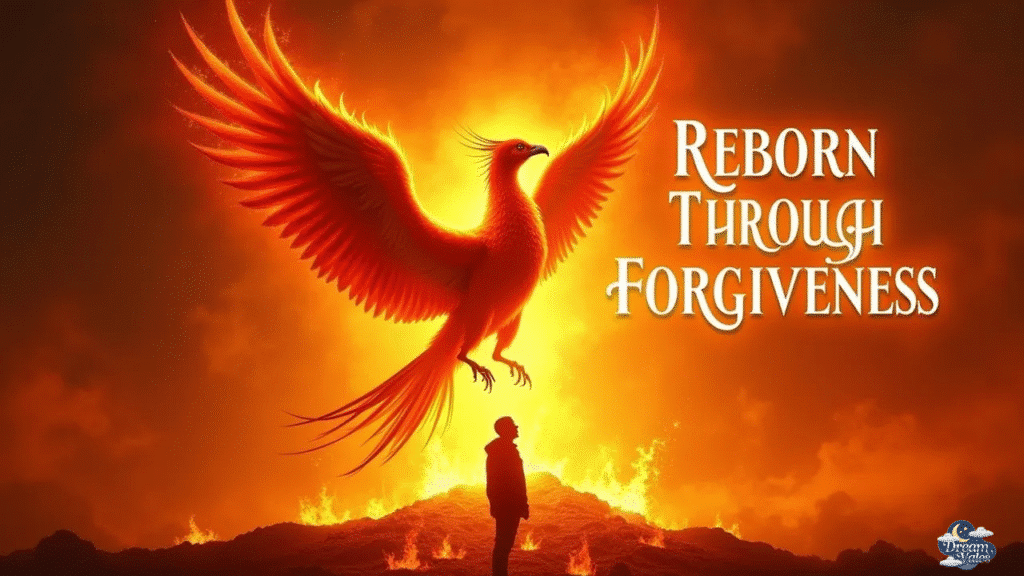
Psychological research validates phoenix symbolism through post-traumatic growth studies documenting how individuals can emerge stronger from devastating experiences. Survivors often report increased empathy, deeper spirituality, and enhanced appreciation for life’s preciousness.
| Phoenix Symbols Globally | Culture | Name | Attributes 🔥 |
|---|---|---|---|
| Greek | Phoenix | Cyclical Rebirth | 500-year Cycle 🔄 |
| Chinese | Feng-huang | Imperial Virtue | Harmony & Peace ☯️ |
| Persian | Simurgh | Healing Powers | Wisdom & Purification 🧙 |
| Native American | Thunderbird | Spiritual Power | Storm Transformation ⚡ |
| Egyptian | Bennu | Solar Renewal | Ra’s Resurrection ☀️ |
| Russian | Firebird | Magic & Wonder | Beauty from Sacrifice ✨ |
| Hindu | Garuda | Divine Vehicle | Vishnu’s Mount 🕊️ |
| Celtic | Otherworld Bird | Soul Transportation | Between-worlds Travel 🌈 |
Contemporary therapy utilizes phoenix imagery to help clients visualize personal transformation possibilities. Art therapy programs encourage phoenix drawings and sculptures as healing metaphor exploration.
Corporate rebranding efforts after scandals often employ phoenix metaphors to communicate genuine transformation commitment. Organizations emerging from bankruptcy or ethical crises use phoenix imagery to signal renewal and rebuilt trust.
Personal phoenix experiences often involve forgiveness as the catalyst enabling transformation. Individuals describe forgiveness as the flame that burns away old resentments, allowing new identities to emerge.
Broken Chain
The broken chain symbolizes liberation from resentment’s bondage and the choice to break destructive cycles. Historical liberation movements worldwide adopted broken chain imagery—from abolitionists fighting slavery to suffragettes demanding equality.
Generational trauma healing recognizes how unforgiveness creates chains binding families to inherited pain patterns. Therapeutic interventions help individuals identify and break these cycles through conscious forgiveness work.
Addiction recovery programs extensively use broken chain symbolism because addiction represents enslavement to substances or behaviors. The Twelve Steps process includes forgiveness work as essential freedom requirement.
Personal empowerment movements embrace broken chains as symbols of self-liberation from limiting beliefs and toxic relationships. Feminist therapy uses chain-breaking imagery to help women escape abusive situations.
Your Forgiveness Symbol
Personal forgiveness symbol selection requires honest reflection on what imagery resonates most deeply with your individual healing needs. Consider which symbols evoked strongest emotional responses while reading this exploration.
Begin incorporating your chosen symbol into daily spiritual practice through meditation, prayer, or simple contemplation. Place visual representations in your environment where you’ll encounter them regularly.
Remember that forgiveness symbols bridge cultural divides because they speak to universal human experiences of pain and healing. Your personal symbol connects you with countless others who’ve walked similar paths toward freedom.
The journey toward forgiveness transforms not only individuals but entire communities as healing ripples outward. Your commitment to forgiveness, supported by meaningful symbols, contributes to humanity’s collective evolution toward greater compassion.
Forgiveness acts like a magic key that unlocks the prison of resentment we’ve built around our hearts. Every culture throughout history has recognized this transformative power and created symbols to represent mercy’s healing touch.
These visual metaphors speak a universal language that transcends borders and beliefs. From ancient temples to modern therapy sessions, forgiveness symbols serve as bridges between pain and peace.




